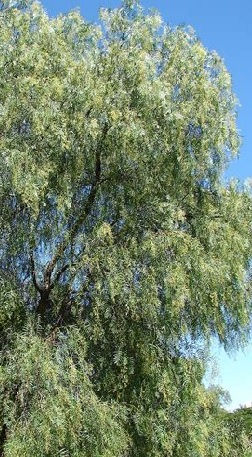FINCH FROLIC GARDEN PERMACULTURE: Three Reasons
- k-england
- Dec 1, 2021
- 2 min read
Updated: Jun 28, 2022
By Diane C. Kennedy, for Let's Talk Plants! December 2021.

An excellent permaculture method of evaluating your landscape is to use a method of elimination. Every plant in your yard should have three reasons for being there. It doesn’t matter what those reasons are. They could be:
· provides shade
· provides privacy
· is a climbing tree for the kids
· produces food, medicine or lumber
· holds an embankment
· attracts birds or butterflies
· or is your favorite plant and you have to have it.
However, if you can’t come up with three positive reasons for a plant to exist, then it’s time to shortlist that plant. It can always be chipped or buried rather than deposited into the landfill. This method of elimination allows you to circumvent sentimentality and the reluctance to remove a plant just because it is still (somewhat) alive.

Take California Pepper trees, Shinus molle. They are fast-growing, handsome trees that can provide excellent shade and feed hundreds of honeybees when in bloom. However, not only are they not from California (Peru) and not peppers, they have an extensive root system that steals moisture from any water source near it. They, like eucalyptus, walnuts and others are allelopathic; in other words, they produce a substance from their roots and leaves that retards the growth of most plants around them. If you have unhealthy, slow-growing plants, check to see if there is a pepper or eucalyptus nearby. If so, they are most likely the culprit.
So, should you keep your pepper tree or not? Use the Three Reasons method to evaluate.
If you would rather have healthy fruit trees and hedges, then the pepper can go. If the pepper has a bench underneath and provides a shady gathering and play area, then it should stay. Or it can go on the shortlist when its usefulness is over, for instance, when another plant grows up to provide shade or privacy, or the kids are grown so they won’t climb it anymore.
Take a walk through your property and make your plants earn their place and their water.
When you evaluate your landscape, you can open up areas where the soil and water may be excellent and then plant something that has three positives on your list there instead. If you aren’t enjoying every square inch of your property then you are paying high property taxes for nothing.

